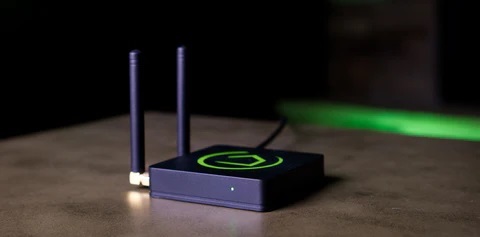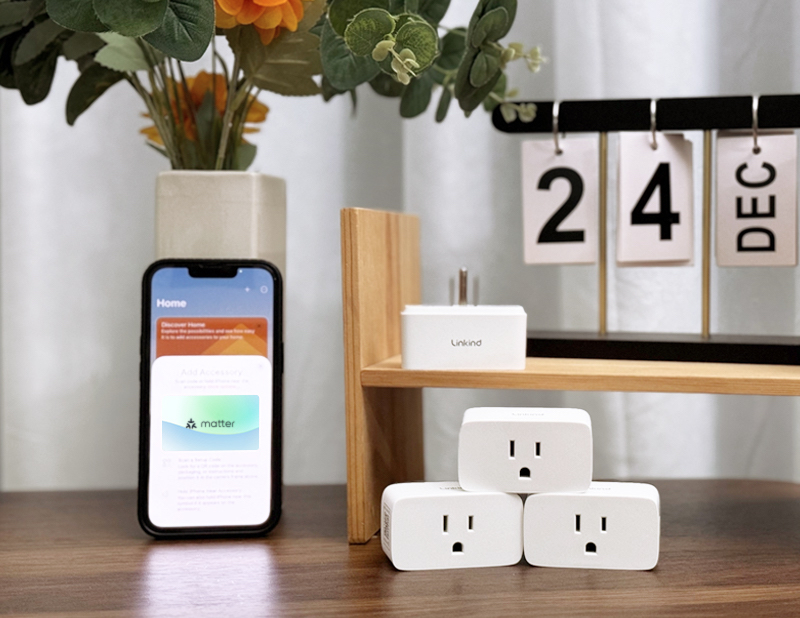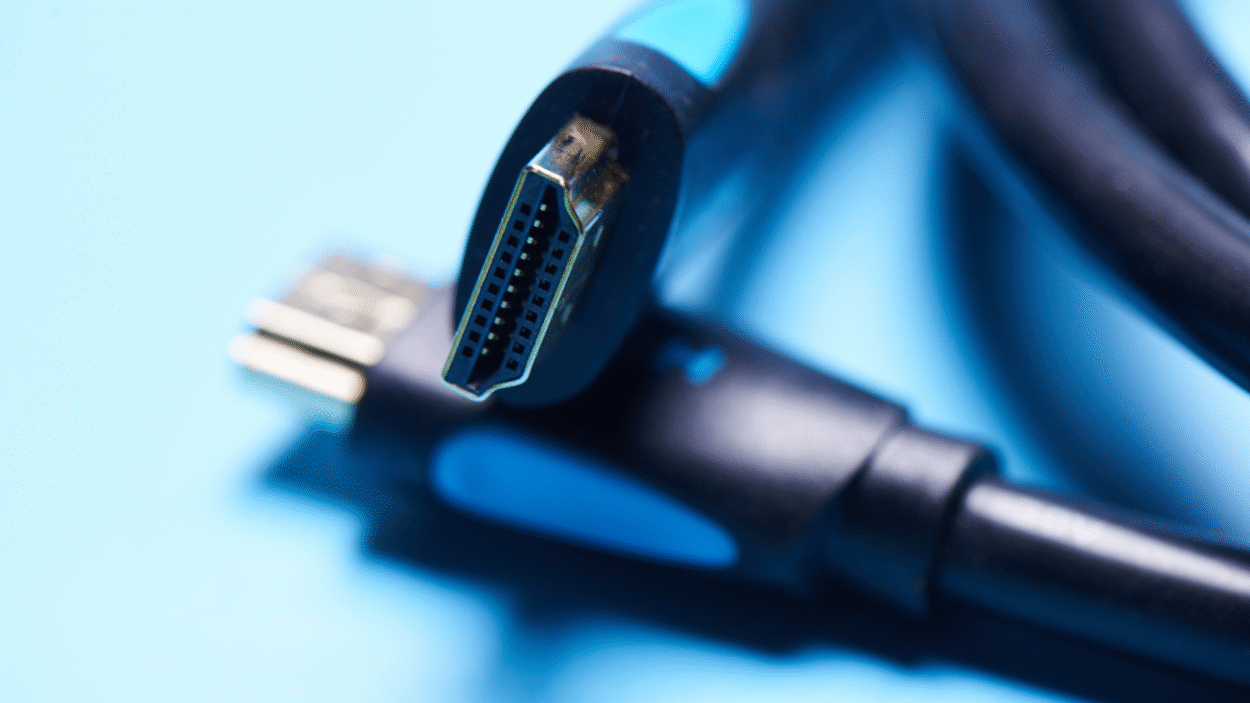Matter (originally called Connected Home over IP or CHIP) is the newest protocol for IoT (internet of things) wireless communications. It promises to be a unifying standard that will allow all IoT devices to work together. If you think that Matter will just be another standard that confuses consumers and complicates smart homes, you are probably wrong. Unlike earlier efforts in this area, the Matter consortium developing the standard includes some of the largest tech companies in the world, including Amazon, Apple, Google, Samsung, along with many other companies. These companies have recognized that it is in their best interest to have IoT devices that are compatible with all of their ecosystems. Then, they can differentiate themselves by building the best possible platform, while only having to build smart home accessories for a single protocol specification.
If you are reading this as a professional integrator, then you are probably more familiar with Crestron (and its competitors) than Matter, which is still relatively new. Crestron is one of the leaders in professionally installed control and integration of smart home and commercial AV systems and remains focused on having customers purchase light switches, touch panels, thermostats, shades, etc., from inside the Crestron ecosphere. I will contend that from a consumer perspective this isn’t a totally bad thing.
While Crestron-branded products are quite expensive, the Rockleigh, NJ, manufacturer offers excellent support through their dealers. This support can be critical when trying to uncover a problem in a large home with a complex Crestron smart home system that includes the distribution of music throughout the home, distribution of video to TVs, integration of a security system, climate control for the home, lighting control, control of motorized shades, and much more. The more third-party accessories that are integrated into a smart home, the more complex it can be to troubleshoot problems. And, when there is a problem, there is a higher chance that different vendors will resort to finger pointing that the problem resides with another company’s product.
That all being said, I believe that Crestron dealers should have the choice of integrating lower cost, off-the-shelf accessories as part of the smart home systems that they offer their customers. Crestron programmers, many of which have installed Crestron systems in their own homes, also should be able to save money by using off-the-shelf accessories in their home instead of having to purchase much more expensive ones from Crestron.
There are also a wide range of smart home accessories that Crestron doesn’t manufacture but are readily available off the shelf. One very popular example is robotic vacuums. Running a robotic vacuum when the house is occupied can be very disruptive as robotic vacuums are noisy and inevitably seem to want to clean wherever you are working. Integrating the vacuum’s operation with a smart home system that knows when the home is unoccupied is ideal. The release of version 1.2 of Matter added support for controlling robotic vacuums along with a large number of other smart home devices.
With this in mind, I’ve been looking for a way to integrate Matter-compatible smart home accessories into a Crestron smart home system.
Hubitat Elevation Hub
In 2020 I wrote an article titled, “Integrating a Wide Range of Zigbee, Z-Wave, and IoT Devices with Crestron.” In it I provided detailed instructions on how to integrate off-the-shelf smart home accessories with a Crestron smart home system using a Hubitat Elevation Hub and Crestron driver software that I wrote and posted on my GitHub.

The Hubitat Elevation hub is a home automation hub that can integrate with a wide variety of off-the-shelf smart home accessories including light switches, sensors, and thermostats. It is a robust platform that automates the operation of smart devices, is very reliable, provides good performance, and offers data privacy. And, just like a Crestron smart home system, all programming executes on the hub and not in the cloud. In this way, the operation of the smart home is not impacted by an internet outage.
On December 18, 2023 Hubitat announced support of the Matter protocol with a simple software update for their latest generation C-8 and C-8 PRO hubs. With this in mind, I set out to try and integrate Matter-compatible smart home accessories with a Crestron smart home system using the same technique I had used to integrate other off-the-shelf smart home accessories as described in my earlier article.
Integrating Matter Devices Through a Matter-Compatible Bridge
Some companies that manufacture a wide range of smart home accessories, including their own hubs, have taken the approach of updating the software on their hubs so they can act as a bridge between their existing products and the world of Matter.

When a user adds the company’s hub to a Matter compatible environment, such as Apple Home, the company’s products that are connected to the hub are bridged through the hub and become part of, in this example, the Apple Home ecosystem. The products can then be controlled and automated from the Apple Home app as though they were Matter compatible. This works even though, with the exception of the company’s hub, the individual products aren’t Matter compatible. Aqara, SwitchBot, and Yolink have taken this approach to make some of their existing product line Matter compatible.
My first attempt to integrate Matter-compatible accessories with the Hubitat Elevation hub was to integrate a Matter-compatible Aqara Hub M2 and the devices connected to it with my Hubitat C-8 hub. Unfortunately, integrating Aqara smart home accessories through the Aqara Hub M2 didn’t work because Hubitat’s initial implementation of Matter doesn’t currently support bridges.
As a fallback, I ordered a generic Matter-compatible smart plug to continue this project. For testing, I purposely chose a highly rated, but inexpensive, smart plug that I found on Amazon. The smart plug I chose is manufactured by Linkind.
Directly Integrating Matter-Compatible Devices with Crestron through the Hubitat
Integrating the Linkind smart plug with the Hubitat Elevation hub was very easy. First, I had to install the manufacturer’s AiDot smart phone app using a QR code printed on the packaging. Then, using the app, I was able to connect the smart plug to my Wi-Fi network and validate that it was working properly.

Every Matter-compatible smart home accessory has a numerical pairing code and equivalent QR code printed on the product. I added the smart plug to my Apple Home Matter ecosystem by simply selecting to add a new device and scanning the QR Code.
Finally, to join the device with my Hubitat Elevation hub I simply:
- Selected “Devices” from the Hubitat’s local web interface
- Pressed the “+ Add device” button
- Pressed the “Matter” button
- The Hubitat web user interface supplies instructions for pairing a Matter compatible device that has been integrated with Apple Home, Google Home, or Amazon Alexa. Matter compatible devices must be integrated with one of these ecosystems before they can be joined with the Hubitat. I followed the directions for Apple Home and…
- Tapped the device card for the smart plug in the Apple Home app
- Tapped the gear icon on the card for the smart plug
- Selected “Turn On Pairing Mode”
- Entered the eleven-digit setup code in the Hubitat web user interface that was displayed in the Apple Home app for the smart plug
- Pressed the “Start Pairing” button
Once pairing was complete, I entered a name for the smart plug, selected the room where it will be located, and clicked “Dismiss” on the pairing dialog in the Apple Home app. The smart plug was now ready to be used within the Hubitat ecosystem.
I’ve documented the procedure for joining a Matter-compatible device with the Hubitat for two reasons. First, so people don’t have to go through the learning curve that I did. Second, to show how simple it is.
Reading about other people’s experience with Matter on the Hubitat Community site and around the internet, most people seem to be having good luck with Hubitat’s implementation of Matter and with Matter in general. However, there are definitely a few Matter-compatible accessories that don’t seem to be working well. For example, an article in The Verge talks about problems with the integration of Philips Hue bulbs through Matter. So, it is worth researching the specific Matter-compatible smart home accessories you want to integrate with a Crestron system through the Hubitat before you jump in.
The people at Hubitat have also put together a wiki of useful tips and tricks for connecting Matter-compatible devices to the Hubitat Elevation Hub. That wiki can be found here.
I also want to mention that there is a project underway by some members of the Hubitat community to develop support for devices made available to the Matter ecosystem through Matter bridges. So, Hubitat connectivity to those devices may become available sometime in the future.
Integrating the Matter Compatible Device with a Crestron Processor
In the article “Integrating a Wide Range of Zigbee, Z-Wave, and IoT Devices with Crestron,” I went into a great deal of detail on exactly how to integrate a smart home accessory that is paired with the Hubitat Elevation Hub with a Crestron 3 or 4 series processor. So, I won’t repeat all of those instructions here. Briefly, the process is to install the Hubitat Maker API app on your Hubitat hub, select the device you want to integrate with your Crestron system, obtain the device ID associated with that device and enter the device ID as a parameter in the appropriate software module in the Crestron-Hubitat integration driver that I wrote (again, that driver can be found on my GitHub here).
Once this process is complete, the Crestron program has been compiled and uploaded to the Crestron processor, then the accessory can be controlled from the Crestron system and feedback on the accessory’s state will be available.
I found performance to be excellent. It takes less than one second after I trigger the smart plug to be turned on/off using the Crestron SimplDebugger for the plug to change state and the feedback of the state change to update in the Crestron system.
I don’t personally have the budget to purchase one of every different type of Matter-compatible accessory on the market for testing. My simple test of using a generic Matter-compatible smart plug shows that the overall flow of data between the Matter-compatible accessory, the Hubitat Elevation hub, and the Crestron smart home processor works. And, not only does it work, but the performance is very good.
Crestron Home
For those that are using Crestron Home, NC Systems Inc. has developed a Crestron-Home Hubitat driver. NC Systems is using the same methodology that I developed for integrating the two platforms. So, there is no reason that their driver shouldn’t work to integrate Matter compatible accessory with Crestron Home.
Conclusions
I’ve been using a Hubitat Elevation hub for more than three years. It has proven to be very reliable. While I would never claim a Hubitat Elevation hub is as powerful as a Crestron smart home processor, it makes an excellent gateway for integrating off-the-shelf Zigbee accessories, Z-Wave accessories, other IoT accessories, and now Matter-compatible accessories with a Crestron system.








